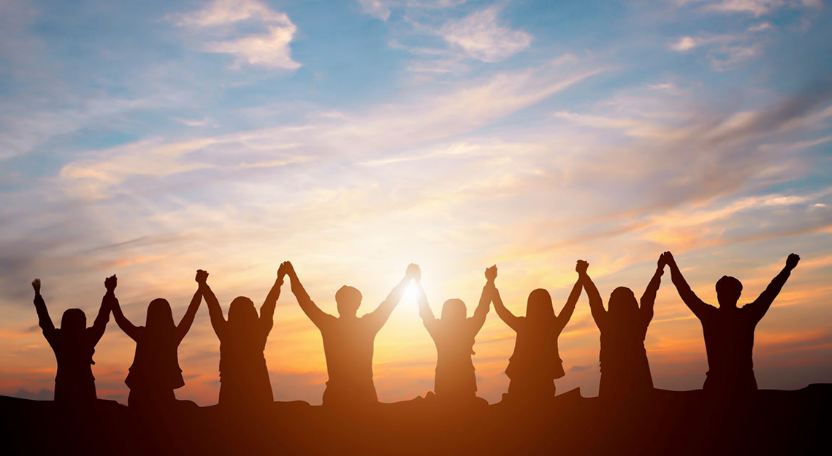There’s more than one way to stretch!
When you hear the word “Yoga”, it’s likely that words like stretching, exercise, practice, flexibility, bending, and twisting come to mind. That’s because the primary association that most Westerners have with yoga has to do with the “on the mat” or physical aspects of the practice of yoga or “Hatha Yoga”.
There are also several other forms of yoga that emphasize different ways of fulfilling the essential purpose of yoga (which we’ll get to in a minute), including:
Jnana Yoga: The path of knowledge, wisdom contemplation and introspection and quiet reflection.
Bhakti Yoga: The path of devotion, emotion, compassion and service to God
Karma Yoga: The path of action and service to others
Raja Yoga: The path of meditation and practices that promote the transcendence of thoughts and mental constructs.
You probably didn’t log on to this website to read about yoga, but trust me, there’s a connection between the subject at hand, and the theme of this blog, and that, in fact, is the point of this post, and the point of Yoga: Connection.
The word “yoga” is a derivation of the Sanskrit term “yui” that means ‘yoke” and refers to the bar that encircles the necks of two oxen or other draft animals, creating a union between them that enables them to work together to plow a field or pull a cart. The intention of the practice of Yoga is to promote and support the joining or integration of individual and divine consciousness.
You may be beginning to see the connection between yoga and relationships at this point, particularly the part about being bound by a harness around the neck, but seriously, when you think about it, there really are some strong parallels between these two concepts. In fact, if you examine the underlying intention of the practices of Yoga and relationship, it quickly becomes apparent that they are very much in alignment with each other. “Relationship Yoga” can be seen as another equally viable path towards the realization of our full potential as human beings.
While this may sound more than a little grandiose, anyone who has experienced the full measure of what committed partnerships can provide, knows that such a claim is not hyperbolic or exaggerated, but is well within the realm of possibility. And like Hatha Yoga, which offers liberation from a restricted and inflexible body, relationship yoga can free us from the limits that are inherent in a life in which there is insufficient connection and mutuality of support in our lives.
And as in other yoga practices, the path to freedom does require effort, commitment, and perseverance, particularly at those times in which feelings of discouragement and pessimism can at times be present. The impulse to quit or opt out can be very compelling, so much so, that just hanging in there can itself be a formidable challenge. Relationship yoga requires us to stretch into our partner’s world, and to persevere in the face of discouragement, frustration and even pain. It demands that we commit to doing our best without pushing too hard or without losing ourselves in the process. It requires a level of self-knowledge, self-acceptance, and self-trust, that can only come through experience, practice, and dedication.
As our practice grows, we develop the capacity to tolerate discomfort, while we remain still, holding a demanding stance. This is what allows us to develop tone. It’s the same in a committed partnership; we get more relaxed over time, in positions in which we may have previously been uncomfortable. We stay present with strong feelings like sadness, anger or fear, rather than escaping into defensiveness. We remain emotionally open and resist the temptation to shut down our feelings. And in the process, we become able to remain connected to our partner with a receptive and caring heart.
The term “Hatha” is made up of two Sanskrit terms: “Ha”, meaning “sun” and “tha” meaning “moon”. In many spiritual traditions, the sun is associated with the masculine, and the moon with the feminine. The practice of joining and integrating the masculine (yang) and feminine (yin) in a balanced way results in a most powerful force. In the practice of both Relationship Yoga and Hatha Yoga the inner masculine and inner feminine come into harmony with each other and bring balance into the entire system. Instead of resistance to the masculine active, initiatory, competitive, penetrating, assertive principles, there is an honoring of these energies. Instead of a denigration of the receptive, passive, sensitive, yielding, allowing, patient principles, there is great respect and the energies of two partners blend together creating a graceful, supple relationship.
All forms of yoga require regular and frequent practice. In doing the practice we become more skillful in handling differences, becoming more generous of spirit, and in generating good will in all of our relationships. We also become physically healthy by stimulating all the body’s systems: respiratory, circulatory, muscular, skeletal, digestive, eliminatory, and reproductive. Using our relationship as a form of yoga also helps us to remain youthful and sexually active into old age, and to live a long, productive life. Scientific studies have shown that those in good marriages are more disease-free, and experience greater longevity. Through contemplation, devotion, and action, yoga practitioners can also expect to experience an overall sense of enhanced well being, as well as greater peace of mind.
There’s no denying that becoming an accomplished relationship yogi requires time, effort, commitment, and a willingness to play the edge of your zones of comfort and familiarity, since surprises are inevitable and the nature of the path differs for everyone. But one thing is for certain: once you embrace this practice your life will never be the same, and boredom and complacency will be forever banished. So make sure that you’re really ready to be finished with those two before you make your decision.
Source: PsychologyToday

Leave A Comment